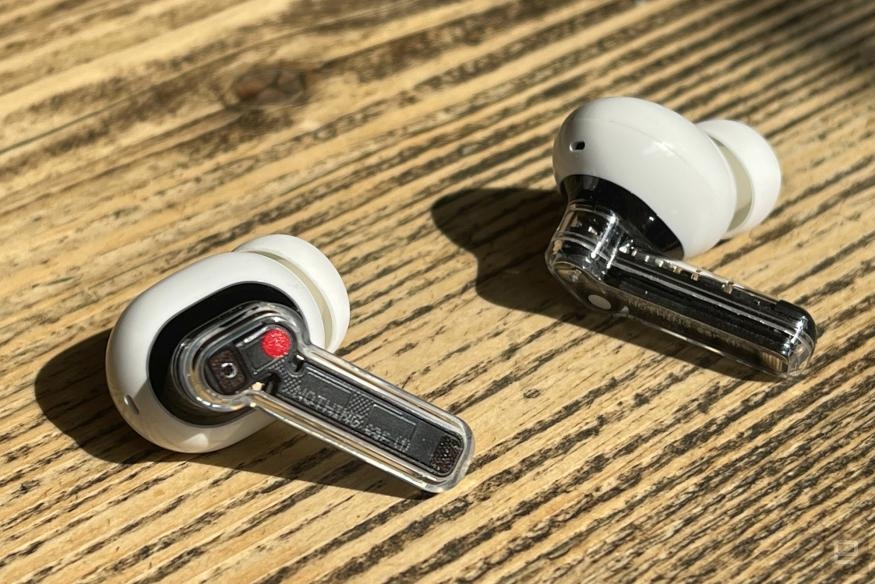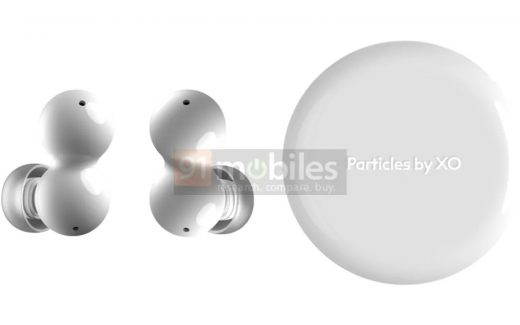Nothing could release its next wireless earbuds under a new brand
Nothing’s Ear 1 wireless earbuds are an ambitious start

Design appears to be very important to Nothing, which has already published several blog posts dedicated to its philosophy and direction — and that’s before the company even launched anything. This is the result. The $100 Ear 1 buds feature active noise cancellation, touch controls, a wireless charging case and a particularly eye-catching see-through design, coming to the US mid-August.
This transparency — a design choice that I love — seemingly resonates with Nothing’s mission to make technology less obvious and more seamless. It makes a statement.
This styling extends to the charging case, which reminds me a lot of Apple’s old wired headphones that used to come packaged with iPhones. They also came in a half-transparent case. Nothing’s Ear 1 case is predictably more complex. The see-through shell has three indented bubbles that keep the buds in place. There’s a red dot both on the right headphone and its socket inside the charger.
Like most wireless earbuds, tiny magnets pull the buds into place, but this time they’re visible. Nothing apparently had to find suppliers to make sure its transparent design would work. The company needed glue that was either invisible or at least more aesthetically pleasing, and according to a spokesperson, these tiny, polished magnets were apparently hard to come by.
So yes, the Ear 1 is all about attention to detail. The case shuts with a satisfying thud, and the snippets of text across the hardware and even the companion app pay homage to retro technology — or perhaps computer interfaces on Alien. These feel like a tribute to see-through tech we’ve seen in the decades past. You might immediately think of those see-through Game Boys from the early ‘90s, but also Apple’s early 2000s eMac all-in-one PC, with transparent casing laid onto white and metal.
Surprisingly, the price is reasonable. These are sub-$100 earbuds, which would put them up against Beats’ latest truly wireless buds and make them cheaper than Apple’s entry-level AirPods. What do you get at this price, though?
While I haven’t had enough time to fully scrutinize sound quality, the Ear 1s sound decent, although there’s no spatial audio functionality which isn’t great for new headphones in 2021. Teenage Engineering, which worked with Nothing on these buds, was responsible for tuning the headphones. The sound is generally clear, but seems to lean toward the mid-range frequencies rather than treble and bass, though you can adjust the equalizer to ramp up either of those levels.
At this price, they predictably don’t stack up against more expensive earbuds like Sony’s WF-1000XM4 ANC buds or Apple’s AirPods Pro. But, perhaps thanks to the silicone tips, they definitely sound better than the original AirPods. The Ear 1s are plenty loud, too.
Each bud weighs under five grams, making them lighter than those more expensive options, while still packing active noise cancellation — something Google’s similarly priced Pixel Buds A lack. After several months using the AirPods Pro, Nothing’s debut earbuds definitely feel more comfortable to me.
Despite the lightness, Nothing claims you should get four hours of listening with ANC on, and up to 5.7 hours (340 minutes) with ANC off. The case — which is wider but slimmer than most charging cases — can add up to a total of 34 hours of listening. There’s some fast-charge tech, too: After 10 minutes in the case you can get about another hour of listening time.
The case can be charged through USB-C or Qi wireless charging — another notable addition at this price. The earbuds are also rated IPX4 for sweat and dust resistance, so they can handle workouts that don’t involve too much rain or perspiration. There are touch controls on both buds, and you can slide your finger up and down the stem for volume control, while a single tap will play/pause and a triple tap will skip a track.
Nothing’s buds are compatible with both Android and iOS devices, and you don’t gain or lose anything depending on which mobile OS you prefer. That is, apart from fast pairing, which is coming to Android devices but isn’t yet enabled at the time of writing.

As much as I love the aesthetics of the Ear 1, my first impressions of these earbuds weren’t great. When trying to connect to my iPhone, pairing was a struggle. Once the buds were eventually connected to my phone, Nothing’s headphone app said that the fully charged case was empty — or not even detect it at all. Similar chaos ensued when I tried to shift pairing to my PC and Android phone. Bluetooth connections can be messy — this just seemed like a messier than it should be. The case itself seems to have its own Bluetooth profile, separate from the buds. That might be what makes pairing the headphones so frustrating.
Nothing’s companion app not only offers a different way to switch between noise cancellation modes, but also a way to reassign touch controls on the Ear 1. It’s a refreshing, uncomplicated app. Having wrestled with other headphone apps from Sony and the rest, though some audiophiles might find it a little restrictive.
There are four equalizer presets: balanced, more treble, more bass and voice. However, you can’t adjust the equalizer manually. The Ear 1 does offer a little more flexibility with noise cancellation with light and maximum settings you don’t often see on earbuds.
The Ear 1 has three high-definition mics for voice calls, with Nothing’s own “clear voice technology,” which utilizes algorithms that apparently help isolate and amplify your voice on calls. It should also help cut out wind noise.

I had a mixed experience with the Ear 1 for phone and video calls. With my handset, the three built-in mics coped with the noise of coffee shops and busy streets fine — in fact the people I talked to said my voice sounded particularly clear. When pairing with my Mac, however, audio quality seemed notably worse than other wireless buds and even the MacBook’s built-in mic.
The Ear 1 buds are an impressive debut device. Nothing’s first product launch is all about selling you on its cool — the company offered a limited run of hardware on StockX that seemed plainly targeted at Hypebeasts and early adopters. The design is compelling, and even the specifications are impressive at this price point. Nothing needs to improve on connectivity hiccups and sound quality if it wants to be mentioned in the same tier as Apple, Samsung and Sony, but it’s a bold start.
(47)


